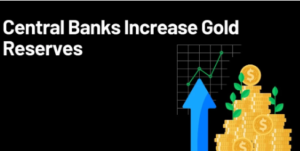As financial markets brace for volatility, this week promises to be pivotal, with central banks from around the world gearing up for critical monetary policy decisions. The spotlight is firmly on the U.S. Federal Reserve, which is widely anticipated to begin its rate-cutting cycle after years of rate hikes aimed at controlling inflation. But the U.S. is not alone—several other central banks, including those in Brazil, the UK, Japan, and Norway, are also preparing to announce their decisions.
U.S. Federal Reserve: The First Cut Is the Deepest
The Federal Reserve’s two-day meeting, starting Tuesday, has the financial world watching closely. Analysts predict the Fed will initiate its first interest rate cut in over a year, likely trimming its benchmark rate by 25 basis points, reducing it from the current 5.25%-5.50% range. However, a substantial portion of the market—41%—believes that the Fed might take bolder action and reduce rates by 50 basis points. This move would be a signal of significant changes ahead, potentially reversing the previous tight monetary policy enacted to combat rising inflation.
John Bilton, head of multi-asset strategy at J.P. Morgan Asset Management, said, “We’re entering a cutting phase,” highlighting that this might be the beginning of an extended rate-cut cycle, though not necessarily tied to a recession. Bilton predicts volatility as the market balances those who believe the cuts are overdue and others who worry about a worsening economic outlook.

Global Central Banks to Follow the Fed’s Lead
This week’s monetary policy shifts extend beyond the U.S. The Bank of England, Brazil’s Central Bank, Norway’s Norges Bank, and South Africa’s Reserve Bank are all scheduled to make critical rate announcements:
- Brazil’s Central Bank is expected to hike its benchmark Selic rate by 25 basis points to 10.75%. Strong economic data and inflation concerns are driving this move. Analysts predict further hikes, possibly pushing rates to 11.50% by the end of 2024.
- The Bank of England (BOE) is expected to keep its rate steady at 5% after recent stagnation in the UK economy. However, economists believe that rate cuts could begin by November, as inflation moderates and growth falters.
- Norway’s Norges Bank is likely to maintain its interest rate at a 16-year high of 4.5%, signaling a pause in its rate-hiking cycle.
- South Africa’s Reserve Bank is also expected to reduce rates this week, marking its first cut in four years, as it looks to balance economic growth with inflation management.
Meanwhile, the Bank of Japan is not expected to raise rates immediately, but many economists predict a hike by the year’s end.
What’s Next? A New Phase of Monetary Easing
As central banks move toward cutting rates, many economists predict a more protracted easing cycle. While the Fed’s decision is expected to dominate the headlines, the broader global shift toward looser monetary policy could have far-reaching effects. Lower rates will likely fuel market volatility as investors recalibrate their expectations for growth and inflation.
For investors, the big question isn’t just how much rates will be cut this week but what the trajectory will look like in the coming months. Too fast, and the economy may spiral into panic; too slow, and growth could be stifled.
In a climate where economic uncertainty reigns, central bank decisions this week could shape global markets well into 2025, creating ripples across bond markets, currencies, and investor portfolios.
Bottom Line
A synchronized rate-cutting phase by major central banks could provide relief to economies but will likely inject fresh uncertainty into the financial markets. Investors and businesses must tread carefully as they navigate this evolving monetary landscape.
1. U.S. Federal Reserve’s Anticipated Rate Cut:
- Meeting Schedule: The Fed’s two-day meeting begins on Tuesday.
- Rate Cut Expectations: Analysts predict a 25-basis-point cut from the current 5.25%-5.50% range. A significant portion of the market, 41%, anticipates a 50-basis-point cut.
- Market Impact: A cut of this magnitude would signal a shift from the Fed’s previous strategy focused on inflation control and could potentially lead to heightened market volatility.
- 2. Key Statements:
- John Bilton (J.P. Morgan Asset Management): Highlights that the rate cuts might signify the start of a longer easing cycle, not necessarily linked to a recession, but warns of potential volatility as market expectations adjust.
3. Other Central Banks’ Decisions:
- Brazil’s Central Bank:
- Current Benchmark Rate: 10.50%.
- Expected Action: Increase by 25 basis points to 10.75%. Further hikes might push rates to 11.50% by year-end.
- Drivers: Strong economic data and inflation concerns.
- Bank of England (BOE):
- Current Benchmark Rate: 5%.
- Expected Action: Likely to maintain the current rate. Rate cuts could commence by November if economic conditions worsen.
- Norway’s Norges Bank:
- Current Benchmark Rate: 4.5%.
- Expected Action: Maintain the current rate, indicating a pause in the rate-hiking cycle.
- South Africa’s Reserve Bank:
- Current Benchmark Rate: 8.50%.
- Expected Action: Reduce rates, marking the first cut in four years to balance growth with inflation.
- Bank of Japan:
- Current Benchmark Rate: -0.10%.
- Expected Action: No immediate hike, but a potential rate increase by year-end is anticipated.
4. Implications of Global Monetary Easing:
- Economic Effects: Lower rates are expected to impact market dynamics, potentially leading to increased volatility. Investors will need to adjust their expectations for growth and inflation.
- Investor Strategies: The key challenge for investors will be to navigate the uncertainty surrounding the pace and trajectory of rate changes. Rapid cuts could induce economic instability, while slow adjustments might hinder growth.
5. Broader Context:
- Global Market Dynamics: Central banks’ decisions will likely influence global bond markets, currency values, and investment strategies, potentially shaping economic conditions into 2025.






